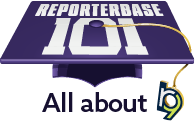Lesson #17
Calendar – Send Overdue Tasks Report function
In addition to monitoring the tasks resources are working on with the Tasks in Progress function, you can give each resource their own prioritized To-Do list of outstanding tasks with the Send Overdue Tasks Report. This static report lists the tasks for which each resource has missed their deadlines in chronological order — and you can email any resource their list of overdue tasks directly from this function.
Get an overview of overdue tasks
Generate a list of all resources with outstanding jobs with one click then email everyone their To-Do lists with a couple of clicks more. Or use the search filters to narrow the list to a single resource’s workload, jobs outstanding on a case, or other criteria. Search criteria include:
- Resource
- Job Type
- Task
- Case
- Task Due Date range
- Business Units
You can sort your results in the grid by one or more columns in ascending or descending order but when you exit the function, RB will revert back to the default order. Export the list as an Excel spreadsheet or a CSV (comma-separated values) file to save, print, share, or use in other applications.
You can view and update any resource’s details from the list and preview their overdue tasks report. RB generates the resource’s report in chronological order, oldest task first.
Hide tasks that don’t need turning in
Some parts to a job that require separate resources — such as a conference room or catering — don’t need a turn-in deadline. If you designate these kinds of tasks as “No Turn-in” when setting them up, they will not appear in your Tasks in Progress or Send Overdue Tasks Report results.
Email reports to whoever needs a reminder
You can email Overdue Task Reports to all resources, a single resource, or select a set of resources manually from the list of resources with overdue work product.
The report is sent as a PDF attachment to email, and you can customize the Subject and Message from the defaults included to match your business. You can also edit the email and attach additional files on the fly when you send the report.
RB automatically logs the date, time, and number of tasks in the resource’s Notes Log. It also records the email sent in the Email Log function in Tools (RB9 only), so you can refer back to it later.
TL;DR: Email your resources their own prioritized To-Do list of outstanding tasks.
RB concepts in this lesson
Business Unit (BU): Your company’s revenue centers or any entity in your business that you want to track separately, such as branch offices, other companies you own, affiliates, and profit-sharing operations.
Job Type: Categories of jobs requested by clients such as Deposition or Real-Time.
Notes Logs: Un-editable internal-use only notes entered either by a user or automatically by RB appear in chronological logs in the database record where they occurred such as a case, job, invoice, or entity.
Resource: Person or thing that provides your business with a service such as reporters, videographers, interpreters, scopists, account executives, other agencies that cover jobs for you, or a conference room.
Task: Service requested with a job such as reporting, interpreting, or video, that require a separate resource (person, company, thing) to accomplish. More >

